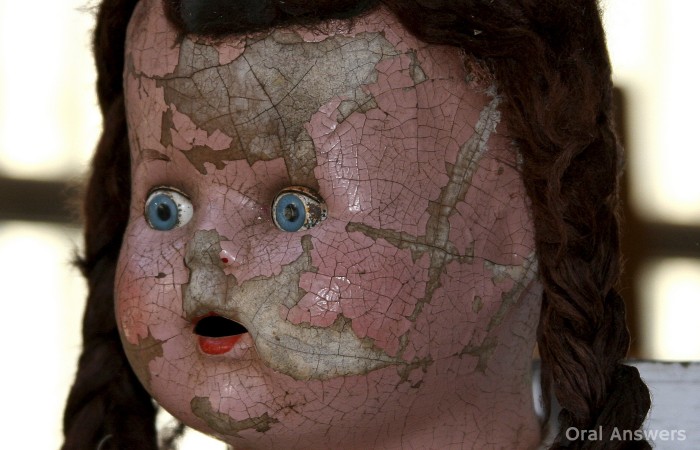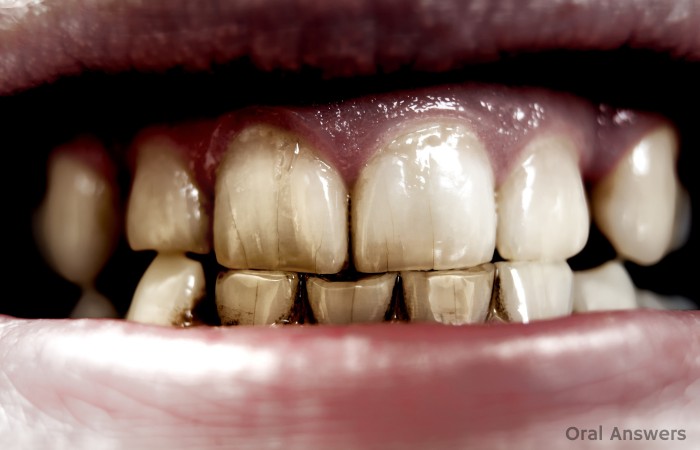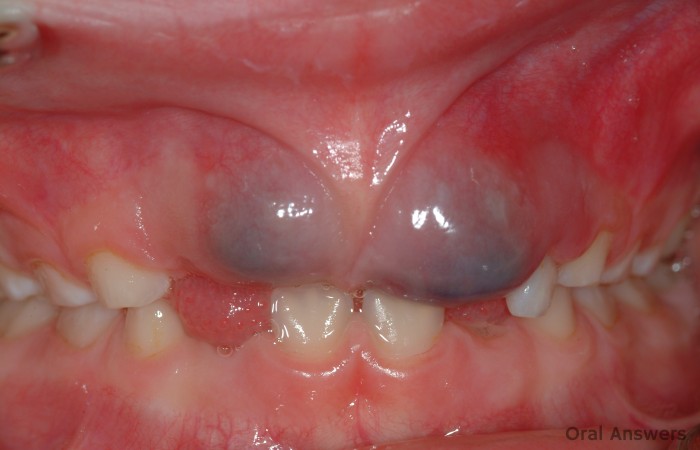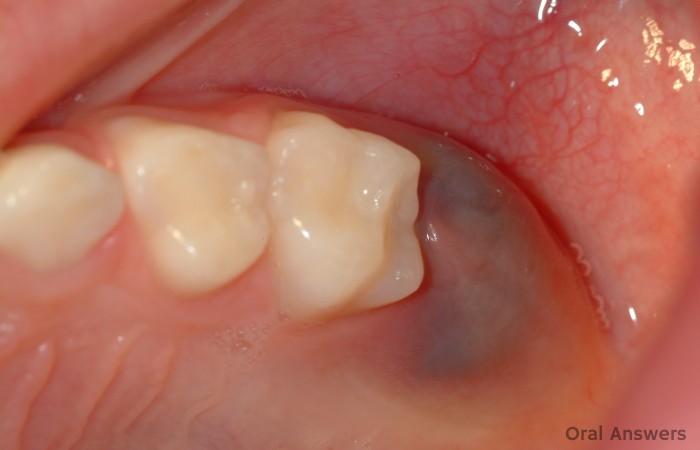teeth implants implant teeth teeth implant cosmetic dental surgery maxillofacial surgeons
Thursday, August 28, 2014
Tooth plaque provides unique insights into our prehistoric ancestors' diet
Coconut Oil To Help Prevent Tooth Decay
 A research team from the Athlone Institute of Technology in Ireland has found that coconut oil treated with enzymes was effective in stopping the growth of cavity-causing bacteria. The enzyme-treatment process simulates what the coconut oil properties would be like if it were digested.
A research team from the Athlone Institute of Technology in Ireland has found that coconut oil treated with enzymes was effective in stopping the growth of cavity-causing bacteria. The enzyme-treatment process simulates what the coconut oil properties would be like if it were digested.
This new discovery is expected to lead to a new approach to dental hygiene products. People who are sensitive to chemical additives may be able to use the treated coconut oil more readily. Current microbial infections are getting more anitbiotic-resistant, which means that scientists will need to find new ways to combat them.
The post Coconut Oil To Help Prevent Tooth Decay appeared first on Gentle Dental.
dental implant surgery mouth surgery tooth implant procedure dental news dental implant procedure
Fighting for oral dominance: Good fungi keep bad ones in check in healthy mouths
dental implant surgery mouth surgery tooth implant procedure dental news dental implant procedure
Craze Lines: Hairline Cracks In Your Front Teeth
Catherine recently left a comment asking about the discolored lines that she has running vertically in her front teeth. She was curious about what kinds of solutions there are to deal with this cosmetic problem.
Before I talk about the solutions to these lines that can occur in our teeth, I'll give an overview of what they are, why they happen, and how to get rid of them.
Craze Lines: Vertical Lines in Our Teeth
These vertical lines in her front teeth are actually known as craze lines. Over years of use, our teeth tend to develop tiny cracks in the hard outer layer known as enamel. These cracks normally don't cause any pain, but can easily stain, causing embarrassing discolored lines on your front teeth.
What Causes Craze Lines?
Craze lines can be caused by stress placed on a tooth. This can happen over the course of a lifetime of chewing or by any other process that causes a lot of stress on our teeth.
Some common causes of craze lines are biting your nails, grinding your teeth (many people do it in their sleep without realizing it), using your teeth as tools, trauma to your teeth, or simply routine use of your teeth.
In Dr. Cohen's textbook about root canals, he states, "Craze lines are merely cracks in the enamel that do not extend into the dentin and either occur naturally or develop after trauma."
This case report describes a situation where craze lines were caused by biting on hard objects such as the top ring of an aluminum soda pop can. Speaking of metal rings, wearing tongue rings can cause craze lines in your teeth.
Interestingly, some research points to temperature changes as a possible cause of craze lines. That's a great incentive to not chew ice cubes (especially after drinking hot coffee!)
One other cause of craze lines that should be discussed is going to the dentist. This research article states that he process of drilling away a cavity and filling a tooth can cause craze lines. That's certainly not a reason to avoid the dentist, though, since craze lines are harmless whereas untreated cavities can lead to significant complications.
Do Craze Lines Mean Your Teeth are Cracked?
Although craze lines are very tiny cracks in the outermost layer of your tooth, you don't need to worry about your tooth cracking in half.
One good way to think about craze lines is to take a look at the above photo of this porcelain doll. The cracks in the porcelain occurred after years of use. Although they are cosmetically displeasing, the cracks don't mean that the doll's head is about to crack open!
If you suffer from craze lines, you'll be pleased to know that the way that our teeth forms makes the enamel highly resistant to cracking.
A recent study looked at the crack resistance of the enamel in our teeth compared to a synthetic enamel. The study concluded, "While enamel is the most highly mineralized tissue of the human body, the microstructural arrangement of the prisms promotes exceptional resistance to crack growth."
If that isn't enough, this study says that "The microstructure of enamel is functionally optimized to guide cracks from the more brittle outer enamel inwards where they experience higher growth resistance and are prevented from causing fracture and chipping."
This study found that enamel is about three times as tough as the naturally-occurring crystals of hydroxyapatite (the crystal that our tooth is made from.)
How to Get Rid of Craze Lines
So, what should you do if you have craze lines and you hate how they look? There are a few alternatives.
The least invasive option is to try teeth whitening. Many craze lines show up because tiny amounts of debri get into the crack and stain the crack, making it visible. Teeth whitening can bleach away the stain and make the craze lines very hard to detect.
There are other options that involve actual dental work. Before trying these options, it's good to keep in mind that craze lines can be caused by dental work, and that no dental work is better than your natural teeth.
These options include having an aesthetic tooth-colored filling material placed over the crack or having a veneer. To do the filling, your dentist will simply smooth down the tooth in the affected area and add some filling material that is the same color as your natural tooth. To do a veneer, your dentist will smooth down the whole face of the tooth and place a thin piece of porcelain over the tooth (kind of like a fake fingernail.)
Conclusion
With these alternatives in mind, it's worth noting that most dentists agree that there's no need to treat craze lines since they rarely lead to further breakdown of the tooth. Some studies (like this one) do argue that the small lines may serve as a future site of a cavity, but if you're going in for your regular check-ups, your dentist can usually detect potential problems.
Do you have any questions about craze lines or cracks in your teeth? Leave a comment in the comments section below. Thanks for reading!
Related posts:
Source: http://feedproxy.google.com/~r/OralAnswers/~3/8XHdFHxc8fg/
maxillofacial oral surgery dental oral dental surgery dental oral surgery dentalimplants
Wednesday, August 27, 2014
Osteoporosis drugs appear to impede cell membrane repair
tooth extraction cost orthognathic surgery mini implants tooth replacement dentures implants
Gum disease bacteria selectively disarm immune system, study finds
dental implants what are dental implants implants dental dental services implant dental
Byproducts of bacteria-causing gum disease incite oral cancer growth, study shows
denture implants dental bridges implant dentists dental problems tooth extraction cost
Stem cells from teeth can make brain-like cells
teeth extraction maxillofacial oral surgery dental oral dental surgery dental oral surgery
Dentist4Sedation.com is Offering Information about Various Sedation Dentistry Options
wisdom tooth removal cost dentist dental implants dental solutions oral dentist surgery oral surgery dentist
Your Family Dentist, PC Replaces Missing Teeth With Dental Implants
maxillofacial surgeons dental surgeon dental surgeons oral dental surgeon dental oral surgeon
Tuesday, August 26, 2014
What’s Your Excuse?
Source: http://www.omfdental.com/blog/2014/excuse/?utm_source=rss&utm_medium=rss&utm_campaign=excuse
oral surgery dentist dentist oral surgery dental implant surgery mouth surgery tooth implant procedure
Gum disease bacteria may cause heart disease
implant dentists dental problems tooth extraction cost orthognathic surgery mini implants
No One Is Safe From Morning Breath!
 | Morning breath is just a fancy way of saying bad breath. Don’t worry, it’s common – everyone gets it and there is nothing to be ashamed of. Although you cannot stop it from happening, there may be some ways to reduce the odor. In order to minimize bad breath, you have to first understand why it happens. When your are sleeping, the normal flow of saliva decreases. This causes your mouth to dry out, providing the perfect atmosphere for odor-producing bacteria to multiply. Unfortunately, this means that no one is safe from morning breath. Here are a few tips to help fight bad breath:
As simple as these steps may be, many people ignore them resulting in bad breath. The most effective way to combat morning breath is with proper oral hygiene. Remember, morning breath is normal. There is no reason to be embarrassed – everyone gets it! |
The post No One Is Safe From Morning Breath! appeared first on Gentle Dental.
dental surgeons oral dental surgeon dental oral surgeon facial surgery dental oral surgeons
A Sticky Situation?
Source: http://www.omfdental.com/blog/2014/sticky/?utm_source=rss&utm_medium=rss&utm_campaign=sticky
dental implants what are dental implants implants dental dental services implant dental
Researchers Identify Aggressive Genes in Oral Cancer
teeth implants implant teeth teeth implant cosmetic dental surgery maxillofacial surgeons
Dentistry: Resin infiltration effects in a caries-active environment -- two-year results
dental implant oral surgeon tooth extraction implant dentistry dental treatment
Monday, August 25, 2014
Leading Dentist in Lexington Celebrates More Than Three Decades in Dentistry
implants teeth teeth implants implant teeth teeth implant cosmetic dental surgery
Tooth extraction prior to cardiac surgery may increase risk of adverse outcomes
dental extractions implant dentures gum surgery maxillofacial jaw surgery wisdom tooth removal cost
Chapter 5: Researching Medical Tourism
Source: http://feedproxy.google.com/~r/BeautyFromAfar/~3/N2-WSr3iONw/
dentistry implants cosmetic dentistry tooth implant implant tooth cosmetic dentist
Tooth loss linked to depression, anxiety
dental oral surgeons maxillofacial surgeon oral maxillofacial surgeon oral and maxillofacial surgeon dentistry oral surgery
On the link between periodontitis and atherosclerosis
cosmetic dental surgery maxillofacial surgeons dental surgeon dental surgeons oral dental surgeon
Los Angeles Dentist, Dr. Carlos Setti, Now Uses Diagnodent
teeth implant cosmetic dental surgery maxillofacial surgeons dental surgeon dental surgeons
Sunday, August 24, 2014
Dentures Require Careful Handling
Read the rest @ The Dental Implant Blog
Source: http://feedproxy.google.com/~r/TheDentalImplantBlog/~3/_Vgnt3ZL4_w/
dental surgeon dental surgeons oral dental surgeon dental oral surgeon facial surgery
Dr. Richard Mogle Provides Pediatric Dentistry Services
cosmetic dentistry tooth implant implant tooth cosmetic dentist tooth implants
'Microbial Pompeii:' 1,000-year-old plaque preserves bacteria, microscopic particles of food on skeleton teeth
tooth implants tooth removal teeth extraction maxillofacial oral surgery dental
Coconut Oil To Help Prevent Tooth Decay
 A research team from the Athlone Institute of Technology in Ireland has found that coconut oil treated with enzymes was effective in stopping the growth of cavity-causing bacteria. The enzyme-treatment process simulates what the coconut oil properties would be like if it were digested.
A research team from the Athlone Institute of Technology in Ireland has found that coconut oil treated with enzymes was effective in stopping the growth of cavity-causing bacteria. The enzyme-treatment process simulates what the coconut oil properties would be like if it were digested.
This new discovery is expected to lead to a new approach to dental hygiene products. People who are sensitive to chemical additives may be able to use the treated coconut oil more readily. Current microbial infections are getting more anitbiotic-resistant, which means that scientists will need to find new ways to combat them.
The post Coconut Oil To Help Prevent Tooth Decay appeared first on Gentle Dental.
maxillofacial surgeon oral maxillofacial surgeon oral and maxillofacial surgeon dentistry oral surgery oral surgery dentistry
Saturday, August 23, 2014
Dentist shortage bites California as more choose to practice out of state
dentist implant teeth surgery tooth implant cost tooth implants cost dental extraction
Functional Website Design: More Than Just a Pretty Face
 Picture this: You’re meeting with a new patient to discuss treatment options for her badly stained teeth. As you prepare to launch into a discussion about the benefits of in-office teeth whitening, you notice that her teeth have been all but destroyed by decay. Technically you could make her teeth appear whiter and more beautiful, but wouldn’t it be better to focus on restorative dental work before addressing cosmetic concerns?
Picture this: You’re meeting with a new patient to discuss treatment options for her badly stained teeth. As you prepare to launch into a discussion about the benefits of in-office teeth whitening, you notice that her teeth have been all but destroyed by decay. Technically you could make her teeth appear whiter and more beautiful, but wouldn’t it be better to focus on restorative dental work before addressing cosmetic concerns?
Website design and dentistry have more in common than you might think. The same principle applies to designing an attractive, effective dental website. A pleasing color scheme and high-quality images may site visitors’ attention, but functionality keeps them on your site and ultimately drives them to make contact. For now, let’s focus on principles of functional dental web design; we’ll look at aesthetics in a later post.
WHO will visit our website?
Patients, obviously, but let’s break it down further. Does your practice generally cater to a few clearly defined demographics? If dental implants are your signature service, your audience will most likely be older adults. A pediatric dentist would design a website that speaks to parents, especially mothers. Are they tech-savvy?
WHY are they visiting our website?
Remember the days when the search for a dentist began with a long list of names and numbers in a phone book? Information was limited at best with no indication of a dentist’s specialty, exact distance, patient satisfaction, or accepted insurance providers. It wasn’t that this information wasn’t important then, rather a matter of space constraints. Ideally, your website should present this information in a logical, easily navigated format. Drop-down menus and toolbars come to mind.
HOW do they visit our website?
Ten years ago, it was as simple as designing for a laptop or desktop screen. Today, your patients access the Web on smartphones and tablets with varying screen sizes and loading times. Responsive web design–design that accommodates a variety of browsers and devices–is critical. If your site isn’t optimized for different viewing experiences, you’ve alienated a sizable chunk of your target audience.
About Jill Nastasia: Jill is CEO and director of business development at MDPM Consulting, a marketing firm catering to the unique needs of dentists. To learn more about web design, blogging, and SEO for dentists, email info@moderndentalmarketing.com or contact us at 972-781-8861.
Source: http://mdpmconsulting.com/2014/07/functional-website-design-more-than-just-a-pretty-face/
implant dental dental implant oral surgeon tooth extraction implant dentistry
Osteoporosis drugs appear to impede cell membrane repair
oral tooth surgery sedation dentistry crown tooth dental bridge jaw surgery
Copywriter Magic: Turning Your Practice Into Words
 When you recognize the great benefits of saying, “yes” to adding a responsive website to your business, you may find that a variety of questions instantly pop up in your mind. In addition to asking us design- and tech-related questions at MDPM, some of the most frequently asked questions by dentists focus on the written content. Much like the way you may dream about dental cleanings and periodontal care in your sleep, copywriters eat, breathe, sleep, and often dream about words. However, perhaps you feel concerned about another person accurately painting a picture of your practice with sentences and paragraphs without having ever stepped foot in your office. By taking a closer look at the role of copywriters in the creation of your website, turning over the creative reins will start to feel like the beginning of a wonderful journey.
When you recognize the great benefits of saying, “yes” to adding a responsive website to your business, you may find that a variety of questions instantly pop up in your mind. In addition to asking us design- and tech-related questions at MDPM, some of the most frequently asked questions by dentists focus on the written content. Much like the way you may dream about dental cleanings and periodontal care in your sleep, copywriters eat, breathe, sleep, and often dream about words. However, perhaps you feel concerned about another person accurately painting a picture of your practice with sentences and paragraphs without having ever stepped foot in your office. By taking a closer look at the role of copywriters in the creation of your website, turning over the creative reins will start to feel like the beginning of a wonderful journey.
We Will Interview You
Not only will we ask you standard interview questions, but we will likely also ask you some not-so-run-of-the-mill questions, like what your favorite movie is, or what you like to do in your spare time. Part of the magic that goes into turning you into a relatable person online, while promoting your business, is ensuring we capture your personality and goals. Through years of experience, we have become familiar with the subtle nuances of a website that capture a patient’s attention. Our copywriters make detecting those major and minor details that truly resonate with a dental patient their number one priority. They also create your web pages around your practice’s goals. Are you focused on driving home your patient-centered approach to dentistry? Do you primarily offer cosmetic services? We’ve got you covered.
Copywriters Love Words
Did I mention how much copywriters love words? First, copywriters make sure content is SEO’d, accessible and easy to read. Choosing the right words is as significant as ensuring the copy reads smoothly. In addition, we recognize that while our writers have a solid knowledge of clinical dentistry, your patients probably don’t. Furthermore, they probably don’t want to. Our writers are masters in turning scientific information – and often-unpleasant information – into content your patients will understand, connect with, and that will not cause them to run from the screen. Copywriters will not write, for example, “decrease discomfort” but “improve comfort.” They will focus on the positive aspects of dentistry to set readers’ minds at ease. MDPM writers create clean, factual web pages, while drawing on both the emotions and logic of your patients, so they feel compelled enough to pick up the phone and make an appointment.
Revisions
Did something change suddenly, such as your address? Did you read through your website only to find something didn’t translate exactly as you had hoped? With lightening speed (without sacrificing accuracy and thoughtfulness) our copywriters will make revisions according to your needs. Our goal is twofold: to ensure we create a website that assists you in attracting and retaining new clients, and to ensure that you feel your website truly reflects your dental practice.
About Jill Nastasia: Jill is CEO and director of business development at MDPM Consulting, a marketing firm catering to the unique needs of dentists. To learn more about web design, blogging, and SEO for dentists, email info@moderndentalmarketing.com or contact us at 972-781-8861.
Source: http://mdpmconsulting.com/2014/08/copywriter-magic/
periodontics oral implants dental crown oral tooth surgery sedation dentistry
Nu Smile Center For Aesthetic andamp; Restorative Dentistry Launches New Website
implant dental dental implant oral surgeon tooth extraction implant dentistry
Taking A Bit of A Blogging Break
Read the rest @ The Dental Implant Blog
Source: http://feedproxy.google.com/~r/TheDentalImplantBlog/~3/TDFVr-uX33A/
crown tooth dental bridge jaw surgery implant dentist dentist implant
Friday, August 22, 2014
Eruption Cyst: Photos of a Purple Bump on the Gums
A little over a year ago, I wrote an article discussing eruption cysts. Those are the bluish-purple bumps that can form on the gums right before a tooth pushes its way into the mouth.
Upon first glance, many parents are understandably concerned that their child has a serious problem in their mouth. The photo I used in the original article isn't very clear, and I thought it would be good to post a couple more photos that were recently shared with me.
Photos of Eruption Cysts
The photo below shows two eruption cysts over the permanent upper front teeth. The teeth are still white, the purple color is due to bruising that has occurred between the gums and the permanent tooth. Usually, no treatment is necessary and the teeth will come through within a couple of weeks.
The next photo shows an eruption cyst where the upper left six-year molar is preparing to come into the mouth. Many parents may not even notice eruption cysts when they occur this far back in the mouth.
Fact: Since many eruption cysts occur on the back teeth and only last a few weeks, they often go undetected. Because of this, nobody really knows how common eruption cysts really are. Most estimates say that they occur in under 1% of all children.
To Treat or Not to Treat
Normally, eruption cysts don't need any treatment. The tooth will usually poke through the eruption cyst and come into the mouth on its own within a couple of weeks. If the eruption cyst is causing lots of pain, or if it is causing concerns due to its appearance (as in the first photo), it can be cut open to expose the tooth.
You can click the following link to check out a picture of a tooth after its eruption cyst has been opened.
More Pictures of Eruption Cysts
You can find more photos of eruption cysts in this article that appeared in the Indian Journal of Dental Research.
If you have any questions or concerns on eruption cysts, feel free to leave a comment in the comments section below. Thanks for reading!
Photos generously provided by Dr. Sarah Hill, a pediatric dentist in Oak Harbor, WA.Related posts:
Source: http://feedproxy.google.com/~r/OralAnswers/~3/bigW6yxRGIc/
dental implant oral surgeon tooth extraction implant dentistry dental treatment



